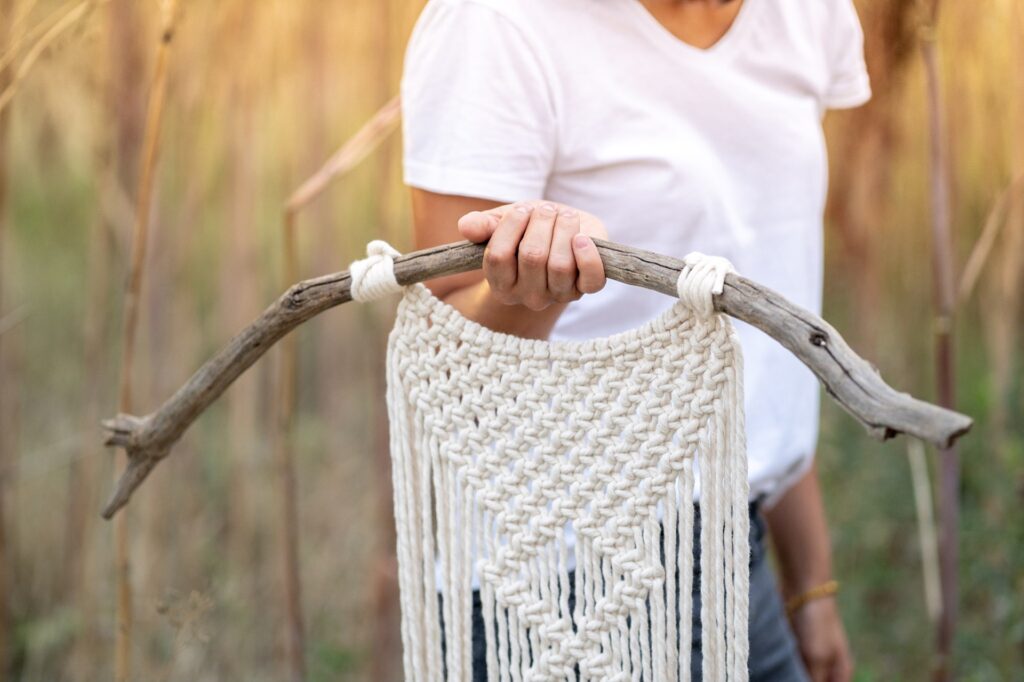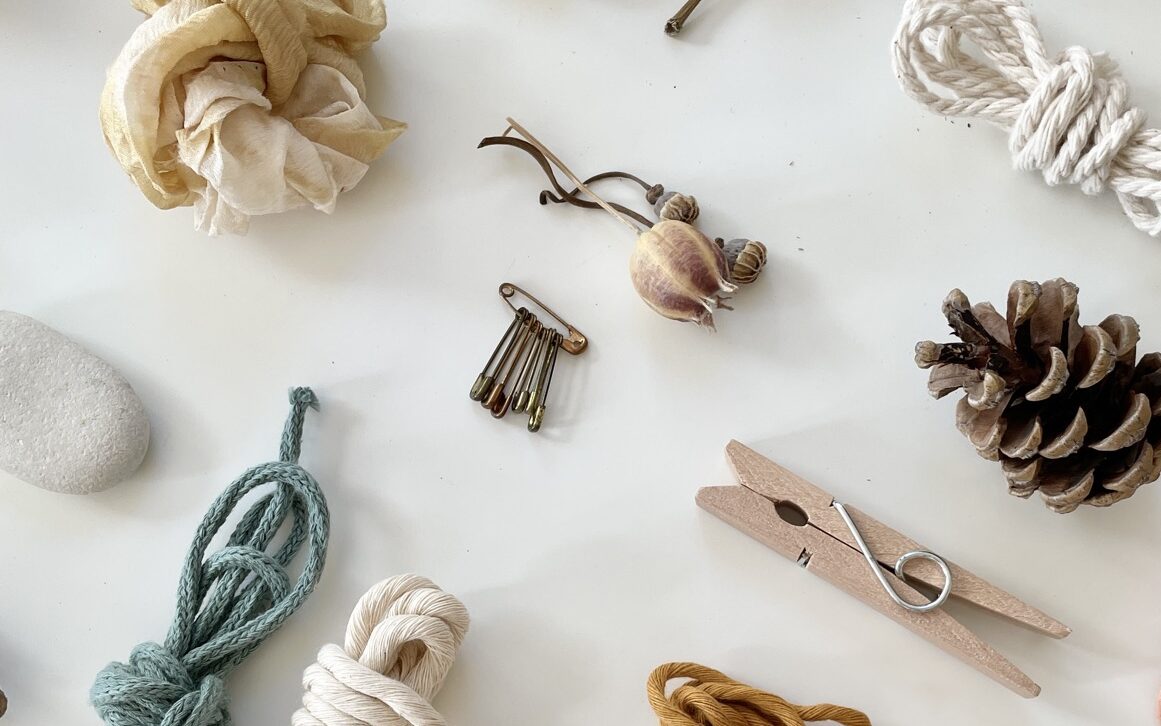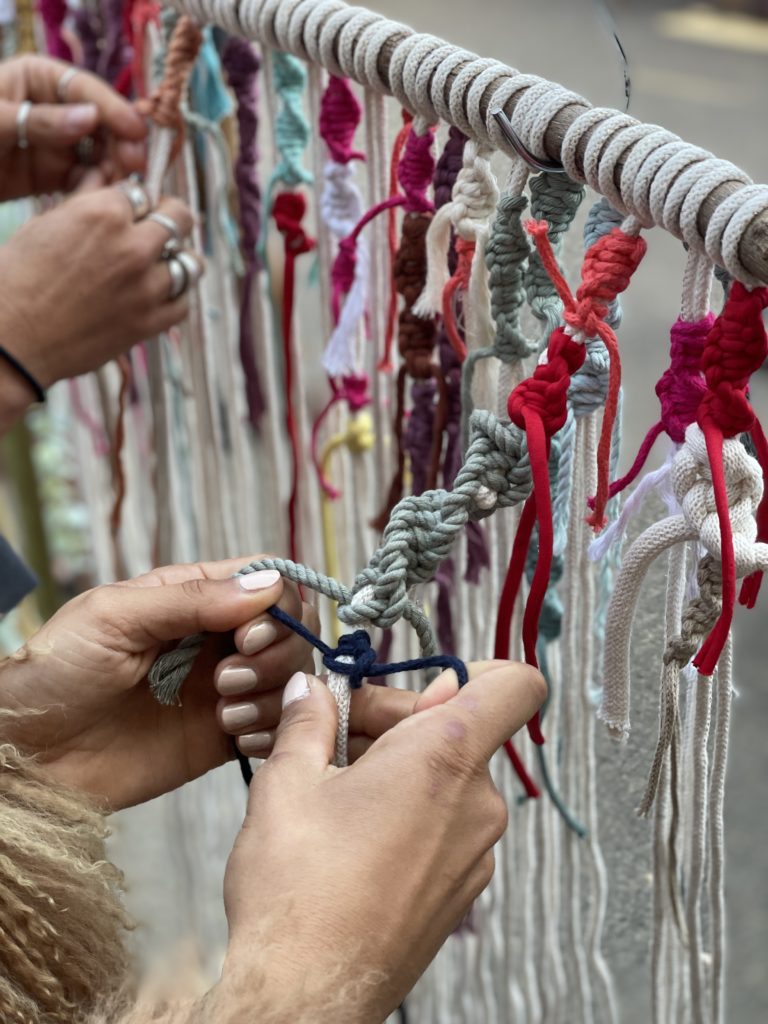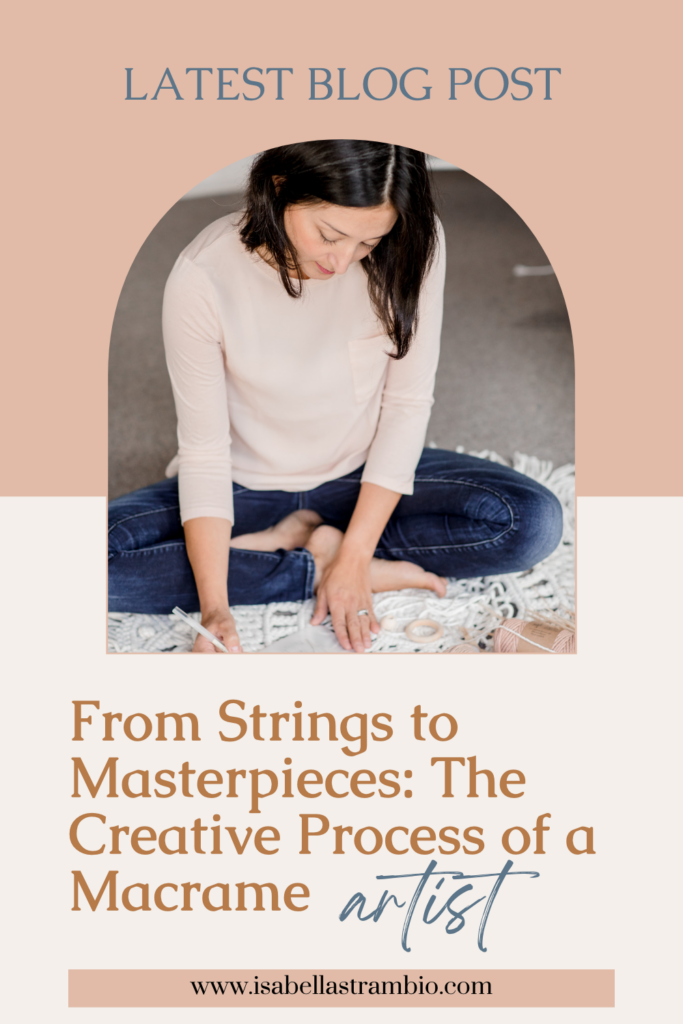From strings to macrame masterpieces
In this blog, you will learn about the creative process of a macrame artist. Keep reading as you find out everything from finding inspiration for your projects, to strings, choosing colours, and selling your macrame art.
Macrame art has been around for centuries, and it’s experiencing a comeback in popularity in recent years. From plant hangers to wall hangings, as macrame artists we can create beautiful and intricate designs using just a few materials- string, rope, and knots.
But have you ever wondered what goes into the creative process of a macrame artist?
How do we come up with their designs, choose colour schemes, and bring our ideas to life?
As a macrame expert, I want to take you deep into the world of macrame art and explore the creative process of a macrame artist. You’ll learn about the different techniques I use, the challenges I face, and the satisfaction I and my students feel when we finally complete a masterpiece (and you can too!).
Whether you’re a macrame enthusiast or simply curious about the art form, my purpose is to give you a newfound appreciation for the skill and creativity that goes into each and every macrame piece.
Finding Inspiration for Macrame Projects – The First Step of The Creative Process of a Macrame Artist
The first step in the creative process for any artist is finding inspiration for a new project. Inspiration can come from anywhere, but for me, nature is often the richest source of inspiration. The natural world provides me with an endless supply of shapes, textures, and colours that I can incorporate into my macrame designs.
Another source of inspiration for me is artists and makers in other creative fields like jewellery, pottery, weaving, and Illustrators. I love to look at my peers for inspiration, ideas, materials, and approaches. Social media platforms like Instagram and Pinterest also have made it easier for me to connect with other macrame artists, create collaborations and share our work with the world.
Finally, as an artist, I often find inspiration in my own personal experiences and emotions. I use my art as a way to express myself, I am most happy when knotting as it’s a brilliant way to work through difficult emotions too.

Choosing the Right Materials for Macrame
Once I found my inspiration for my project, the next step is choosing the right materials. The materials I use in my macrame pieces can vary greatly depending on the nature of the project and the desired outcome.
One of the most important considerations when I am choosing materials for macrame is first sustainability as I use only 100% recycled cotton for all my work and the quality of the strings. The knots used in macrame can place a lot of stress on the material, so it’s important to choose the highest quality material you can afford that can withstand the tension.
Another consideration when choosing materials for my macrame is the colour and fiber of the material. I mainly like a natural look and tend to go for neutral colours, but I also use a variety of colours and textures when I want to create interest and depth in my designs.
You can find the list of my recommended macrame suppliers in the UK and Europe here.

How to begin knotting if you want to become a macrame artist
For beginners, macrame can seem a bit intimidating and overwhelming. I remember the frustration when I started as I didn’t know what source to trust or where to look for proper guidance, I just needed one place where to get all the information. However, with a little bit of practice and patience, anyone can learn the basic macrame knots and techniques, and I have the privilege to witness this progress every single day with my students!
On my free resources page here you can get my free expert advice and all you need to start making beautiful macrame pieces with ease all in one place. Think of: where to find your tools, quality eco-friendly materials, the best world suppliers, get easy to follow tutorials, and much more. I take so much care and effort in making sure my website is always updated with valuable macrame information, curated blogs, and tutorials because awakening your creativity through the art of macrame is my mission and my soul purpose.
Common Mistakes to Avoid as a Macrame Artist
Like any art form, macrame takes practice and patience to master. However, there are some common mistakes that beginners often make.
One of the most common mistakes in macrame is using the wrong type of material. As mentioned earlier, it’s important to choose high-quality material that can withstand the tension of the knots and the function of the macrame piece you are making. For example, for a bag, I would recommend braided string because it’s durable, and soft but also the easiest to clean. Using a material that is too weak or low quality can result in a project that falls apart.
Another common mistake is not tightening the knots enough or too much. Macrame knots need to be tightened just the right amount in order to hold the project together and look fluid. If the knots are not tight enough, the project can fall apart, but if the knots are too tight the project can look too rigid and lose the original shape.
The Importance of Color and Texture in Macrame
Colour and texture are two important elements in macrame. Macrame artists often use a variety of colours and textures to create interest and depth in their designs.
When choosing colours for a macrame project, it’s important to consider the overall colour scheme of the room or space where the project will be displayed. Neutral colours like beige and grey can create a calming effect, while bold colours like red and orange can create a dramatic effect.
The texture is also an important element in macrame. Different textured materials like t-shirt cotton, wool or even raffia can add depth and interest to a macrame project. I love to experiment with other materials, it always boosts my creative process.
Adding beads made of various materials or crystals to your macrame is another way to bring colours and textures.

Sharing and Selling Your Macrame Projects
Once a macrame project is complete, the next step is to share it with the world, why wouldn’t you? I always encourage my students to share their work on social media platforms like Instagram and Pinterest, I love to witness their progress and the confidence boost they get when receive compliments.
For those of you who want to sell your macrame work, there are a variety of options. You can sell your work on online marketplaces like Etsy, take it a step further and create your own website with Showit like mine or Shopify, and participate in local art shows and craft fairs; showcasing your work is vital.
If you thinking of selling your work but don’t know where to start, you can enjoy some of my go-to biz resources (and favourite things!) to help you in your creative journey here.
Final Thoughts from Your Macrame Expert
Macrame art is a beautiful and intricate art form that I fell in love with years ago, it’s an art that requires skill and patience. The creative process of a macrame artist involves finding inspiration, choosing the right materials, and mastering the art of knot tying.
By following my macrame tips and techniques outlined in this article and joining one of my online courses HERE, suitable for beginners to more advanced makers, anyone can create beautiful macrame pieces that will be treasured for years to come.
PIN IT FOR LATER!
